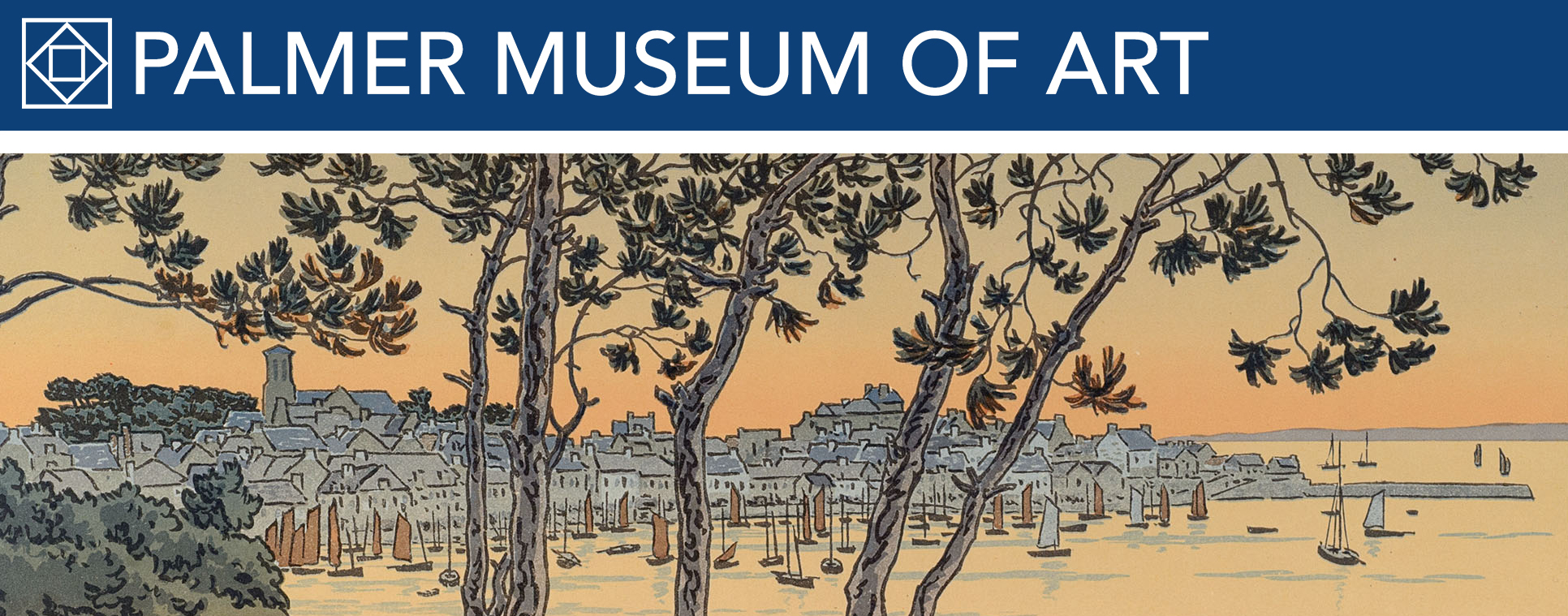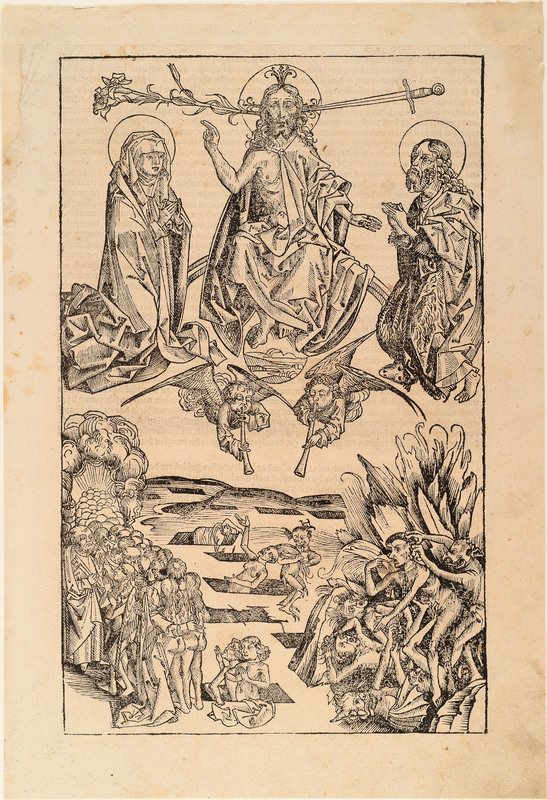The Last Judgment From the Nuremberg Chronicle
Item
Title
The Last Judgment
From the Nuremberg Chronicle
From the Nuremberg Chronicle
Creator
Artist unknown
After Michael Wolgemut
German, 1434/1437–1519
Or Wilhelm Pleydenwurff
German, c. 1460–c. 1494
Published in 1493 by Anton Koberger
German, c. 1445–1513
After Michael Wolgemut
German, 1434/1437–1519
Or Wilhelm Pleydenwurff
German, c. 1460–c. 1494
Published in 1493 by Anton Koberger
German, c. 1445–1513
Materials
Woodcut
Measurements
image: 14-15/16 x 8-15/16 in. (36.3 x 22.7 cm), sheet: 16-3/4 x 11-7/16 in. (42.5 x 29 cm)
Description
The making of the Nuremberg Chronicle, a biblical-based world history issued in 1493 by the Nuremberg publisher Anton Koberger, was, like the production of most books at the end of the fifteenth century, a highly collaborative affair. With funding secured by two Nuremberg merchants, Sebolt Schreyer and Sebastian Kammermeister, Koberger commissioned the text from Hartmann Schedel, a local physician and humanist scholar. Michael Wolgemut, the leading artist in Nuremberg, and his stepson, Wilhelm Pleydenwurff, were engaged to create the drawings for the book’s 1809 illustrations. Upon completion, these designs were forwarded to Koberger to be transferred to woodblocks and cut by his specialists, called Formschneidern, and then printed, together with the text, in his shop. A total of 1,500 examples of the Nuremberg Chronicle in Latin, and another 1,000 in German, were published.
This image of The Last Judgment decorates the closing pages of the Chronicle proper, which detail what will transpire at the end of time. Flanked by the Blessed Virgin Mary and St. John the Baptist, Christ, the arbiter of the final rendering, perches upon a rainbow while angels at his feet call forth the apocalypse with their trumpets. Two objects appearing to emanate from his head signal the fate of those rising from their graves below. To his right, a lily, symbol of innocence, indicates those righteous individuals who will accompany St. Peter to their final resting place in heaven. To his left, a sword, sign of the damned, governs those sinners who have been condemned to an eternity in hell.
This image of The Last Judgment decorates the closing pages of the Chronicle proper, which detail what will transpire at the end of time. Flanked by the Blessed Virgin Mary and St. John the Baptist, Christ, the arbiter of the final rendering, perches upon a rainbow while angels at his feet call forth the apocalypse with their trumpets. Two objects appearing to emanate from his head signal the fate of those rising from their graves below. To his right, a lily, symbol of innocence, indicates those righteous individuals who will accompany St. Peter to their final resting place in heaven. To his left, a sword, sign of the damned, governs those sinners who have been condemned to an eternity in hell.
Source
Palmer Museum of Art, The Pennsylvania State University
Identifier
2014.69
Rights
This image is posted publicly for non-profit educational uses, excluding printed publication. Other uses are not permitted.

